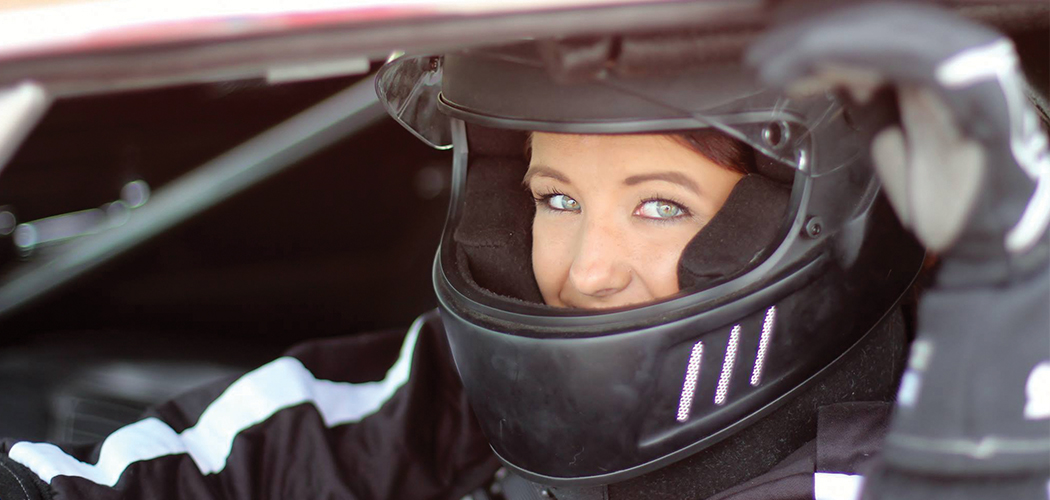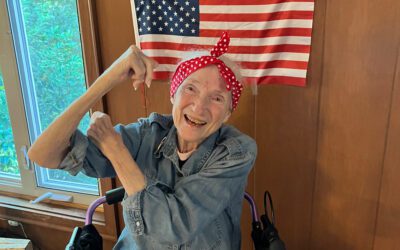[title subtitle=”words: Marla Cantrell
images:courtesy Alex Taylor”][/title]
Booneville, Arkansas sits in the River Valley between the Ozark Mountains and the Ouachitas. The 4,000 people who live there are typically outdoor types, taking advantage of the nearby national forests and the state parks. On weekends residents might go to Mount Magazine, the highest point in the state, to hike or grab a bite to eat at the lodge. On Friday nights during football season, most of the town shows up to watch the mighty Bearcats play.
Among the students is seventeen-year-old Alex Taylor, the junior class president and former homecoming maid who hopes to be valedictorian next year. Those she goes to school with have known her so long, there’s not much she can do to surprise them. They see her pull up in her tricked out 1968 orange and black Camaro, and the fact that she races crosses their minds, if only for a second. “People at school think it’s cool,” Alex says. “They think I drive a car, that I race, but it’s not that big a deal. I think that’s cool because I can go other places and people think it’s a really big deal. I kind of have two different lives.”
In September 2013, just after she’d turned sixteen, Alex was the youngest driver ever to compete in Hot Rod Magazine’s Drag Week in Bowling Green, Kentucky. Drag Week is a racing event that allows drivers to compete on five strips over five days. Even before she arrived, the buzz was growing. She’d posted on a racing site that she was going to be there, and as soon as she showed up fans were seeking her out.
Part of her appeal comes from aesthetics. She says she’s 5’3″, but knows that’s a stretch. She’s petite, and she has a smile that can knock you off your feet. Her eyes are technically green, but they’re really “about a million different colors.” She likes clothes and shoes and jewelry, but she also likes skateboarding and dirt biking and water skiing. At parties, she finds herself pulled into conversations with the guys, and typically the talk is about motors.
Her parents own their own shop, DT Hotrods, in Booneville. “I was three weeks old when I first came here, and they’d put me in a bouncy chair,” Alex says, sitting beside her mom, Debbie, on a Monday afternoon. All around them are old cars, including a ’53 Nash, that are being restored.
“By the time she was one, she was climbing stairs with me behind her,” Debbie says. “She had such great coordination. At two she was putting together puzzles. When she was small she’d go into my pantry and stack all the cans in her wagon and they’d be stacked high, but they never fell, and she did it perfectly, every can. She rode a motorcycle before she rode a bike without training wheels.”
Naturally curious, Alex found herself drawn into the world of motors. Her dad, Dennis, enjoyed her interest, stopping what he was doing to explain how things worked, letting Alex try her hand at small repairs. “I watched and I remembered,” Alex says, “that’s how I learned.”
Dennis was also entrenched in the drag racing world. At ten, Alex became his crew chief. “He had a black ’67 Camaro with an inner cooler that brought down the temperature of the motor,” Alex says. “You put ice and water in it. Dad would pull in and I’d drain the water and put the ice in and refill it. Now I help him change the jets in the carburetor.”
When Alex was fourteen, she got her learner’s permit. At fourteen-and-a-half she received her hardship driver’s license. That’s when Debbie gave Alex her ’68 Camaro, on the condition that she help restore it. “There wasn’t a lot of body work,” Alex says. “It was really simple when it started. And then Dad said, ‘You could do Drag Week,’ and that’s when the car started getting complicated. The motor got complicated. Dad taught me how to weld and do the more complicated work, like help machine my own four-barrel throttle body for the fuel injection.”
Shortly after Alex upgraded from a hardship license to a regular driver’s license, she began to train for Drag Week. “I learned everything in two weeks, at the track in Centerville and then at Tulsa. I turned sixteen in July. We finished my car in August. We rented Centerville racetrack for a day, right down the road, and it’s just a thousand foot, not a quarter mile. I made some passes. I learned how to do a burnout. I got the feel of going down the track. That was the first time I made a pass. I went to a test-and-tune in Tulsa and made my first passes in front of people. That was nerve-racking.”
A week later, she headed to Drag Week. “My dad took us to Bowling Green, stayed a day, and then it was me and my mom in a brand new car that hadn’t been road tested, hadn’t been on the drag strip much,” Alex says. “My car wasn’t running right and I was working on it.”
It was important for Alex to prove she was the one who was in charge of her car. She remembered the advice she’d been given by one of her heroes in racing, Barb Hamilton. “She raced when it wasn’t really accepted for women to be part of it,” Alex says. “She was the first woman ever to have an NHRA license. She had to fight to get it. She told me, ‘You don’t want to be the girl that’s the driver. You want to be the girl who knows what she’s doing.’
“I know what’s going on in the motor and why this is how it is. Sometimes guys, even older guys, have their car built by someone and they don’t have a clue what’s going on with it. I know what’s inside my motor, and it’s an advantage.”
Alex’s expertise won the crowd over. Despite the problems she was having with her shifter, she qualified as number thirty-seven out of 100.
Hot Rod Magazine and 1320Video posted several clips of her with her “Badmaro,” which is what she calls her car, and even has a license tag with that name. More than two million people have watched the videos.
Since that first showing, her record has gotten even better. She earned her National Hot Rod Racing Association license in June of last year, and competed in her second Drag Week. “The fastest my car’s actually gone is a 906 at 154 miles an hour. That’s 9.6 seconds in a quarter mile.”
Alex describes what it felt like out there on the track. She dresses in a fireproof suit and protective gear, then takes her place behind the wheel. Her car’s interior is black, and in the summer it’s sweltering. She doesn’t feel anxious, just focused. The thrust of the engine throws her back in the seat, and even as fast as she’s going, it all plays out in slow motion. The adrenaline rush comes after the race is over.
“People think you get in a car, you push the gas pedal, you steer. You just go straight. How hard can that be? It’s so much more complicated. You have to consider track conditions. My tires weren’t sticking because they were old. And I was making a lot of power. My car was fishtailing down the track. You’re trying not to let off the gas. Going 150 miles per hour, there’s a lot that can go wrong. You have to be thinking of scenarios and what you’re going to do if that scenario happens. You have to think fast. And you have to be ready to react if something happens to the car beside you. You’re multi-tasking. You’re manually shifting the car. I do a lot of it by ear. You’re watching to make sure nothing’s wrong inside the car.”
She believes she’s gotten better since her first time at Drag Week. She proved it when she finally beat her dad. “It’s fun to line up against him. All his power’s made at the beginning of the track. All my power’s made at the end. His is an old-school cool and mine’s new-school cool. He’s got the carburetor; I’ve got the turbos. The turbo’s power’s at the end.”
While Alex is talking, “You Wear it Well,” by Rod Stewart is playing in the background. Her dad, Dennis, joins the conversation. He says, “We kind of mirror each other. I think she’s an old soul. We’re more alike than we are different. We like the same music. We just got back from a Tesla concert. Almost no other teenagers were there.”
Friends often tease Alex because she’s so close to her parents. “I text them a lot,” she says. “I spend a lot of time with them.”
She shrugs. It makes all the sense in the world to her. Her day is nearly over, so she heads out to get in her “Badmaro,” which gets eleven miles per gallon in town. There is a small silver square on the back of her car, not much bigger than a juice carton. Inside is a parachute she uses on the track. Asked if she’s tempted to speed, she says, “The thing that saves me is that the car feels like it’s going a lot faster than it is. It’s noisy. Plus, if I do something wrong, Dad will take my car away.”
She touches the hood of her car, and slips inside, already anticipating her next big race.




